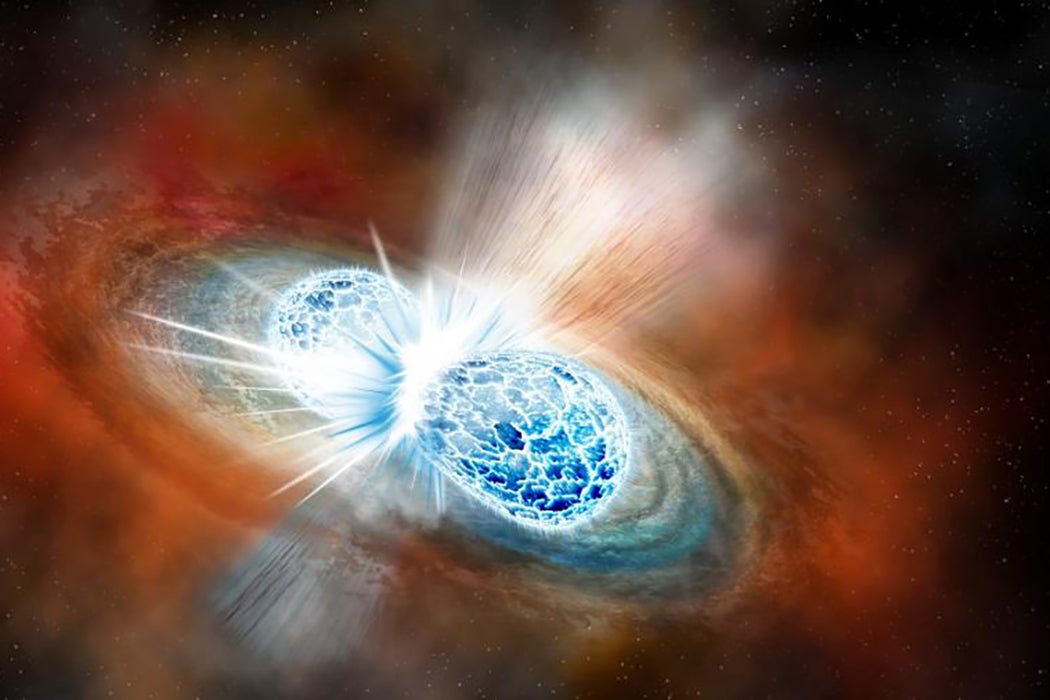It’s the talk of the science world. On August 17th, the Gravitational Wave detector LIGO detected a passing wave. Soon other instruments were picking up gamma rays and other evidence; telescopes soon zoomed in. Something incredible was happening in the far off constellation of Hydra; two neutron stars were colliding, producing vast clouds of gold and other heavy elements. Sounds pretty cool, but what exactly is a neutron star anyway?
Neuton stars were first predicted in 1934 by Walter Baade and Fritz Zwicky. Writing in PNAS, they focused on supernovae, or the explosion and collapse of larger stars. They theorized that a supernova, rather than solely representing the destruction of a star, was actually the transition of a star into a neutron star, a much smaller star that has most of the mass of a regular star. These relatively small objects have incredibly high density, and consist almost entirely of neutrons—subatomic particles that carry no electrical charge. In the intense gravity, neutrons can be packed tighter than electrons or ordinary atomic nuclei. Lacking charge, neutrons neither repel nor attract each other.
At the time of collapse, the electrons (negatively-charged subatomic particles) in the nascent neutron star are at extremely high energy; it’s the only way to pack them into so small a space. If the inward crush of gravity is high enough, the electrons react with positive particles (protons) to form the neutral neutrons. Their packing abilities allow the star to compress still further and complete the transition into a neutron star. The conditions are so weird and the particles so densely packed that the interior of a neutron star is its own state of matter, different from solid, liquid, gas, and plasma. Baade and Zwicky proposed that neutron stars were the most stable form of matter possible.
All that remained was to find proof of a neutron star. Neutron stars are quite cool, although energetic, and emit radiation in the radio band. For various reasons, their radio waves oscillate and it was predicted that these stars would produce brief bursts of radio waves at regular intervals. In 1967, a young graduate student named Jocelyn Bell detected just such a pattern of regular radio waves, and the short duration of the bursts suggested a small, dense object. Ms. Bell, now Dr. Bell Burnell, had discovered the first pulsar, eventually confirmed to be neutron stars.
Now it’s been confirmed—all in real time—that neutron stars are the source of most of the heavy elements in the universe. It’s an amazing accomplishment, and represents an international triumph of scientific cooperation. Astronomers all over the world were organized on short notice to observe the collision. One of the published papers has more than 4,000 authors. Is this maybe another Nobel in the works?







